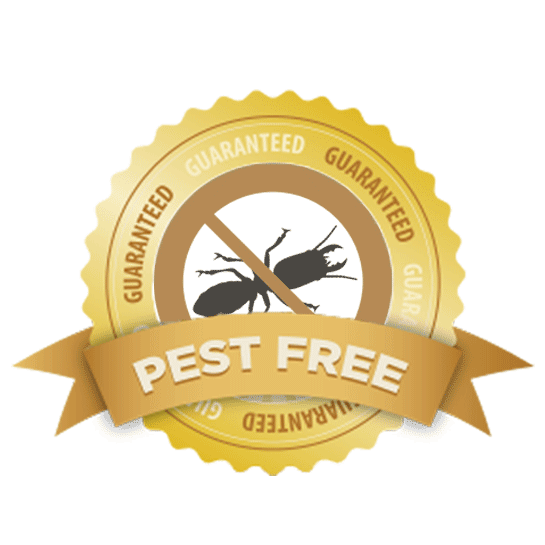Professional A1 Charlotte Bed Bug Exterminator - Quality Service Guaranteed
Wiki Article
Bed Insect Therapy Breakdown: Comparing Chemical Vs. Non-Chemical Solutions
In the world of parasite control, specifically when taking care of the persistent problem of bed pests, the option between chemical and non-chemical therapy solutions can be a crucial one. Both methods offer unique benefits and disadvantages, affecting elements such as performance, security factors to consider, and overall price. By analyzing the nuanced information of each method, a more clear understanding of which course to pursue in resolving a bed bug invasion can be attained.Efficiency of Chemical Therapies
Chemical treatments for bed insect problems have been commonly identified for their rapid and potent efficacy in removing these parasites. When considering the efficiency of chemical therapies, it is essential to comprehend that they can give a detailed and quick option to a bed pest problem. Professional exterminators typically rely upon pesticides to target bed pests at various stages of their life cycle, including adults, eggs, and nymphs. These chemicals usually work by interrupting the bed insects' nerve system, bring about paralysis and ultimate fatality.Furthermore, chemical therapies have the benefit of offering residual results, suggesting that they can continue to remove bed pests even after the initial application. This recurring action is specifically valuable in combating any possible re-infestations. In addition, the fast activity of chemical treatments can bring relief to people encountering severe bed pest invasions, allowing them to reclaim control of their living rooms rapidly.
Safety And Security Worry About Chemical Solutions
When utilizing chemical solutions for bed insect therapy is guaranteeing the security of passengers and the setting,One essential facet that requires careful consideration. While chemical therapies can be effective in eliminating bed pests, they might position threats if not dealt with appropriately. Among the primary security worry about chemical remedies is the potential injury they can cause to human health and wellness. Exposure to particular chemicals used in bed insect therapies can cause respiratory system issues, skin irritability, or various other adverse reactions, especially in individuals with pre-existing problems or level of sensitivities. In addition, inappropriate application or dose of chemical pesticides can cause hazardous deposits sticking around in the cured location, posturing long-lasting wellness threats to owners.Moreover, the environmental impact of chemical remedies is another substantial consideration. Some chemicals used in bed bug treatments might be dangerous to beneficial bugs, wildlife, and environments if they seep right into the dirt or water systems. It is necessary to use chemical therapies sensibly, complying with safety and security guidelines, and considering much less harmful options to mitigate these dangers and make sure the effective and secure management of bed pest invasions.
Advantages of Non-Chemical Techniques
Considering the possible safety and security problems and environmental effect associated with chemical solutions for bed bug therapy, exploring non-chemical methods presents an appealing alternative with a number of unique advantages. Non-chemical treatments are environmentally friendly, as they do not add to air or water pollution, A1 bed bug exterminator charlotte making them a sustainable choice for parasite control.In addition, non-chemical services can be effective in targeting bed bugs, consisting of hard-to-reach areas where chemical treatments may not pass through - A1 exterminator charlotte nc. Methods such as warmth treatment, vacuuming, heavy steam cleaning, and mattress coverings offer extensive elimination without the usage of unsafe chemicals.
Limitations of Non-Chemical Treatments

Additionally, non-chemical therapies often call for several applications to attain effective elimination. This can be taxing and might not always assure complete elimination of all bed pests and their eggs, specifically in hard-to-reach or concealed areas.
Furthermore, the success of non-chemical treatments heavily depends on appropriate execution and thoroughness, which can be challenging for people without specialist knowledge. Poor application of non-chemical methods might cause incomplete elimination, causing persistent problems and the requirement for added therapies.
Consequently, while non-chemical therapies have their advantages, it is important to recognize these constraints and consider them when determining the most reliable method for taking care of bed pest problems.
Cost Comparison: Chemical Vs. Non-Chemical Options
Provided the limitations related to non-chemical treatments, a vital aspect to assess in the context of bed bug monitoring is the cost contrast in between chemical and non-chemical choices. Chemical therapies commonly involve the application of insecticides by experts, which can vary from $250 to $900 per room, depending on the extent of the problem and the size of the area to be treated. On the other hand, non-chemical therapies like warmth therapy or heavy steam can be a lot more expensive, with expenses varying from $1,000 to $6,000 for an entire home. While the initial cost of chemical treatments might seem reduced, multiple treatments may be required to completely remove the infestation, possibly boosting the general expense. On the other hand, non-chemical alternatives may supply a more lasting and green remedy, although they can be cost-prohibitive for some people. Eventually, when considering the cost of bed insect therapy options, it is very important to consider the upfront expenses against the performance and long-term sustainability of the chosen method.Conclusion

Considering the possible security worries and environmental effect linked with chemical remedies for bed pest therapy, checking out non-chemical techniques offers a promising choice with several distinctive advantages.Provided the limitations connected with non-chemical treatments, a vital aspect to assess in the context of bed pest management is the expense comparison in between chemical and non-chemical choices. In contrast, non-chemical treatments like warm treatment or vapor can be much more pricey, with costs varying from $1,000 to $6,000 for a whole home. While the initial expense of chemical therapies may appear reduced, multiple treatments might be required to completely get rid of the infestation, potentially raising the overall expense.In verdict, when contrasting chemical and non-chemical bed bug treatment alternatives, it is essential to think about performance, safety, benefits, restrictions, and expense.
Report this wiki page